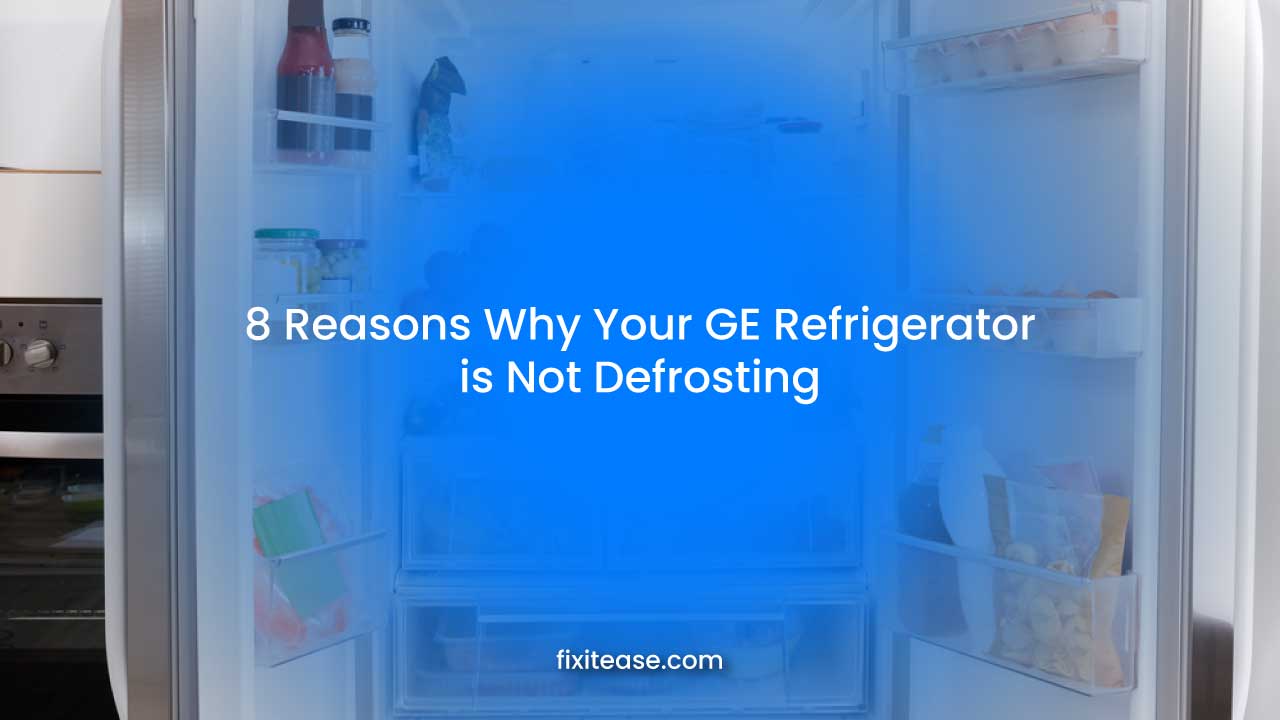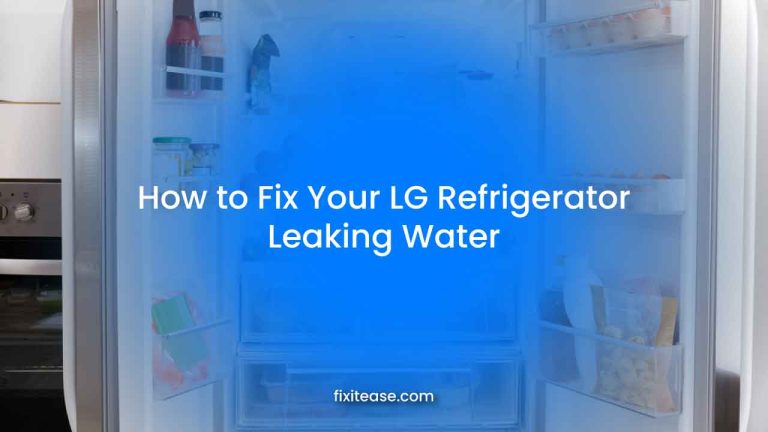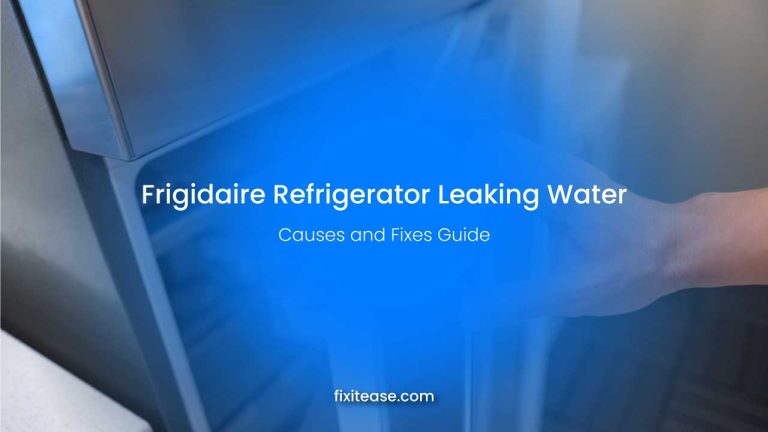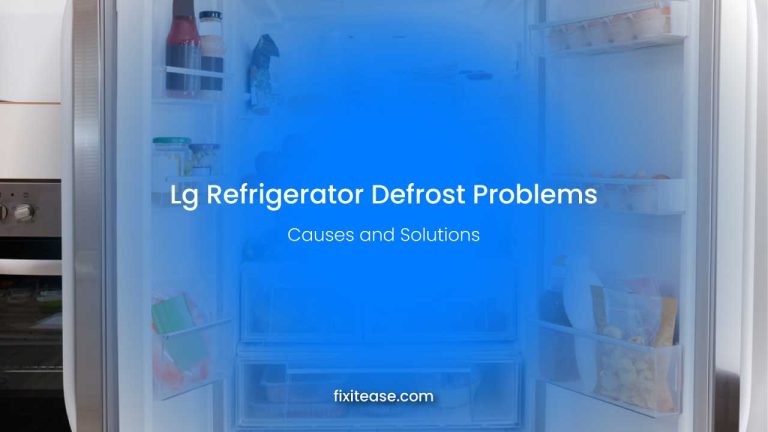8 Reasons Why Your GE Refrigerator is Not Defrosting (Answered)
Your freezer might not be defrosting properly for three main reasons. These are a broken defrost timer, a malfunctioning defrost heater, and a broken thermostat.
The trouble with a malfunctioning defrost system goes beyond simple frost accumulation. It’s about ensuring the appliance operates efficiently and keeps your food preserved correctly. Whether you’re someone who heavily relies on your refrigerator or just prefers to keep household appliances in top condition, understanding this issue is essential.
It’s not just an inconvenience but can also lead to food waste and higher energy bills. A GE fridge not defrosting correctly is something that needs prompt attention. So, let’s address this issue together. Here, you’ll find insights into why your GE refrigerator might not be defrosting and the steps to fix it.
The Defrosting Process in GE Refrigerators
When your GE refrigerator isn’t defrosting correctly, it can lead to a host of issues. It’s essential to understand how the defrosting process works and recognize the signs of malfunction. This knowledge can save you time and prevent food wastage.
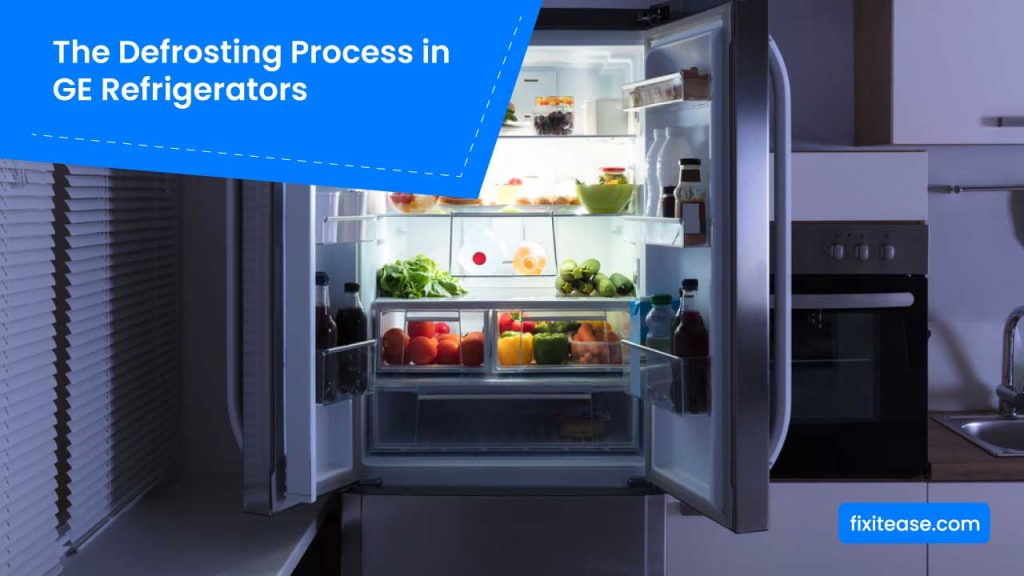
How the Defrosting System Works in GE Refrigerators
- Timer-Controlled Defrost Cycle: The fridge periodically switches to defrost mode based on a set timer.
- Defrost Heater Activation: A heater inside the fridge turns on to melt frost and ice.
- Automatic Return to Cooling: After defrosting, the system automatically reverts to cooling mode.
- Thermostat Monitoring: A thermostat monitors the temperature during defrosting to prevent overheating.
- Drainage of Melted Ice: Melted ice is channeled to a drain pan, preventing water buildup.
Signs of Defrosting Issues in Your GE Refrigerator
- Excessive Frost Buildup: More frost than usual indicates a problem.
- Warmer Fridge Temperature: If the fridge feels warm, the defrost system may be failing.
- Unusual Noises: Sounds like buzzing or clicking can signal defrost timer or heater issues.
- Frequent Cycling On and Off: The fridge turns on and off more often than usual.
- Water Leaks: Malfunctioning defrost systems can cause leaks inside or outside the fridge.
8 Common Causes of Defrosting Problems in GE Refrigerators
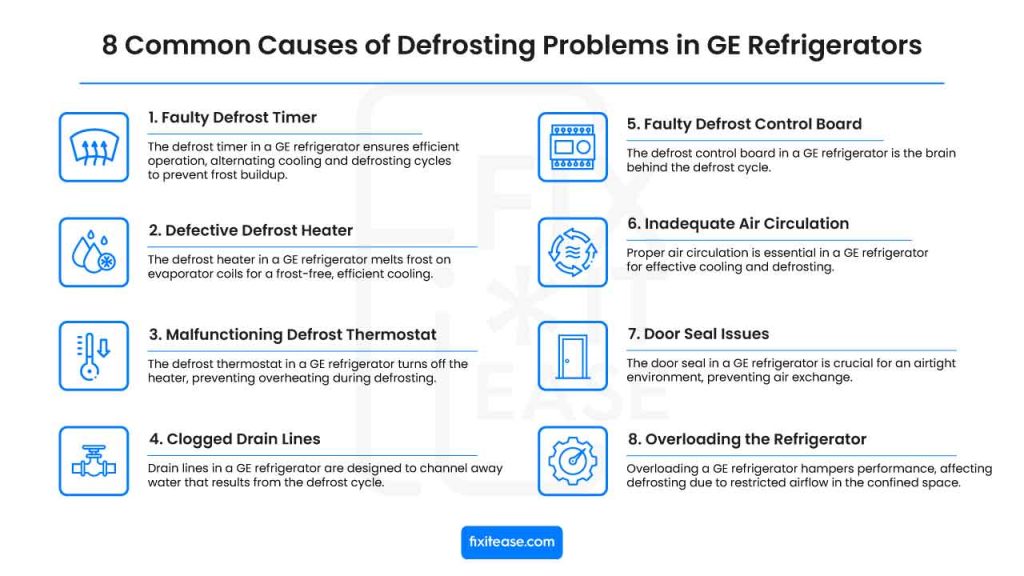
Defrosting issues in GE refrigerators can be a real hassle, affecting everything from food preservation to energy efficiency. Understanding the common causes of these problems is critical to quick and effective troubleshooting. From faulty timers to malfunctioning heaters, various factors can disrupt the delicate balance of your fridge’s defrost cycle.
1. Faulty Defrost Timer
The defrost timer in your GE refrigerator is vital to its efficient operation. It alternates the fridge between cooling and defrosting cycles. This balancing act is essential to prevent frost buildup and keep your food fresh.
Symptoms
If the timer fails, you might notice telltale signs. Your fridge may have too much frost or might feel warmer than usual. It could also get stuck, constantly cooling without ever defrosting, or stop cooling altogether.
Solution
A straightforward way to check the timer is by using a multimeter for continuity testing. If it’s not functioning correctly, replacing the timer is typically the solution. This fix helps to re-establish the regular defrosting cycle, ensuring your refrigerator runs smoothly and efficiently.
2. Defective Defrost Heater
The defrost heater in a GE refrigerator plays a crucial role in melting away frost that accumulates on the evaporator coils. When working correctly, it ensures a frost-free, efficient cooling environment.
Symptoms
If the defrost heater is defective, you’ll likely notice a buildup of frost in the freezer compartment, even in frost-free models. Your fridge might also struggle to maintain the desired temperature, leading to spoiled food.
Solution
To diagnose a faulty defrost heater, you can use a multimeter to check for continuity. If the heater is not functioning, replacing it is usually the best course of action. This repair is essential to restore the refrigerator’s ability to self-regulate frost and maintain consistent cooling.
3. Malfunctioning Defrost Thermostat
In your GE refrigerator, the defrost thermostat is a safety device that turns off the defrost heater when the evaporator coils get sufficiently warm, preventing overheating. It’s a small but vital component in the defrosting process.
Symptoms
A malfunctioning defrost thermostat often leads to incomplete defrosting or excessive frost accumulation. If the thermostat fails, it can prevent the defrost heater from turning on, allowing frost to build up unchecked.
Solution
You can test the thermostat with a multimeter to check for continuity at its operating temperature. If it’s not functioning as it should, replacing the thermostat is generally the next step. This ensures that the defrost heater operates correctly, keeping your fridge frost-free and efficient.
4. Clogged Drain Lines
Drain lines in a GE refrigerator are designed to channel away water that results from the defrost cycle. These lines play a crucial role in preventing water accumulation and ice buildup inside the fridge.
Symptoms
When these drain lines get clogged, you might notice water pooling at the bottom of the fridge or freezer. Excess water can also lead to ice accumulation, impacting the fridge’s efficiency and cooling ability.
Solution
To address clogged drain lines, first locate and inspect them for any visible blockages. Clearing out debris or ice can often resolve the issue. Regular cleaning and maintenance of these lines can prevent future blockages, ensuring the smooth operation of your refrigerator’s defrost system.
5. Faulty Defrost Control Board
The defrost control board in a GE refrigerator is the brain behind the defrost cycle. It determines when to start and stop the defrosting process, coordinating various components like the heater and timer.
Symptoms
If this control board is faulty, it can lead to irregular or failed defrost cycles. This malfunction often results in excessive frost buildup or a refrigerator that can’t maintain the correct temperature.
Solution
To diagnose a defective defrost control board is tricky, as its symptoms often resemble other defrost system issues. If other components are functioning correctly, the control board may be the culprit. Replacing it is usually necessary to restore the fridge’s proper defrosting functionality and overall efficiency.
6. Inadequate Air Circulation
Proper air circulation is essential in a GE refrigerator for effective cooling and defrosting. It ensures even temperature distribution and aids in the efficient removal of moisture during the defrost cycle.
Symptoms
It can be identified by uneven temperatures within the fridge, with some areas being colder than others. This issue might also lead to frost buildup, as stagnant air becomes overly humid.
Solution
Ensure clear airways and not overload the fridge with food are vital steps to improve air circulation. Regularly checking and cleaning the vents and fan can also help maintain proper airflow, which is crucial for the refrigerator’s effective operation and longevity.
7. Door Seal Issues
The door seal, or gasket, on a GE refrigerator is crucial for maintaining an airtight environment. This seal prevents warm air from entering and cold air from escaping, which is crucial for efficient cooling and defrosting.
Symptoms
If the door seal is damaged or worn out, you might notice condensation or frost buildup inside the fridge. It can also lead to the refrigerator working harder to maintain the temperature, increasing energy usage.
Solution
Inspect the seal for any cracks, tears, or gaps. A simple way to test it is by closing the door on a piece of paper; if the paper slides out quickly, the seal may need replacing. Keeping the seal clean and intact ensures better cooling efficiency and reduces defrosting issues.
8. Overloading the Refrigerator
If you overload a GE refrigerator, it can hinder its performance, especially in the defrosting process. When too many items are packed inside, it restricts airflow, which is critical for even cooling and effective defrosting.
Symptoms
A clear sign of overloading is inconsistent cooling, with some areas of the fridge feeling warmer. This can lead to food spoilage and inefficient operation. Additionally, excessive frost buildup may occur due to poor air circulation.
Solution
To prevent these issues, it’s essential to organize the contents of your refrigerator efficiently. Make sure there’s enough space between items for air to circulate freely. Regularly decluttering and arranging food items can significantly improve your refrigerator’s defrosting efficiency and overall cooling performance.
Common Causes of Defrosting Problems in GE Refrigerators
| Issue | Symptoms | Solution |
| Faulty Defrost Timer | Excessive frost, fridge too warm, stuck in one mode. | Test with a multimeter; replace if faulty. |
| Defective Defrost Heater | Buildup of frost, fridge struggling with temperature. | Check with the multimeter for continuity; replace if necessary. |
| Malfunctioning Defrost Thermostat | Incomplete defrosting, excessive frost accumulation. | Test the thermostat and replace it if it fails. |
| Clogged Drain Lines | Water pooling, ice buildup in the fridge. | Clear out debris or ice from lines. |
| Faulty Defrost Control Board | Irregular or failed defrost cycles, frost buildup. | Diagnose and replace if other components are fine. |
| Inadequate Air Circulation | Uneven temperatures frost buildup due to stagnant air. | Clear vents don’t overload and maintain clear airflow. |
| Door Seal Issues | Condensation or frost inside, increased energy usage. | Inspect and replace the seal if damaged or worn. |
| Overloading the Refrigerator | Inconsistent cooling, excessive frost due to poor circulation. | Organize contents to ensure space for air to circulate. |
Step-by-Step Troubleshooting Guide for Defrosting Issues in GE Refrigerators
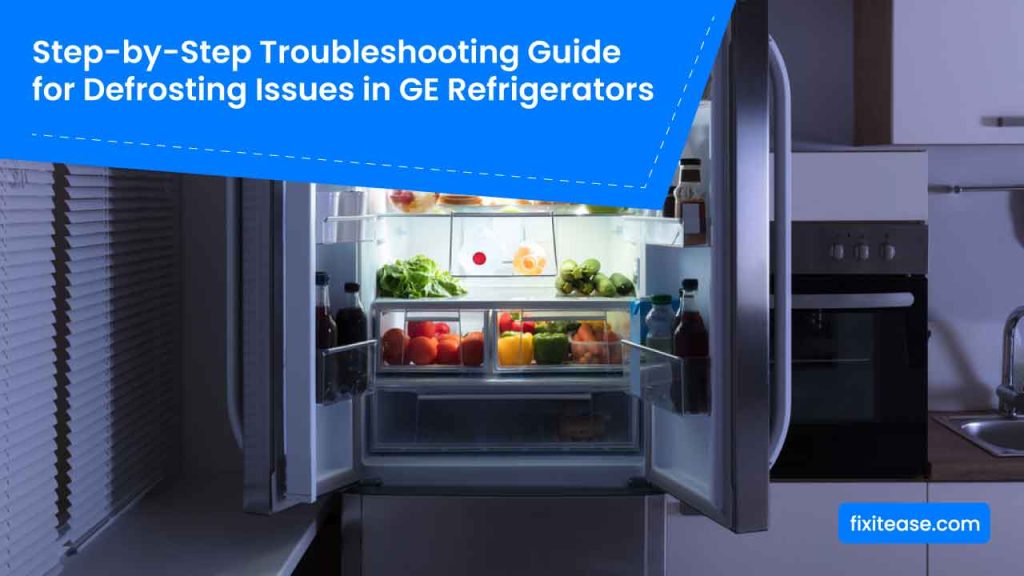
When you’re facing defrosting problems with your GE refrigerator, knowing where to start can make all the difference. This guide is crafted to walk you through a straightforward troubleshooting process. By following these steps, you can diagnose and often resolve the issue yourself.
- Start by locating the defrost timer and manually advancing it to initiate a defrost cycle. If the refrigerator doesn’t switch to defrost mode, the timer may need replacement.
- Use a multimeter to test the defrost heater for continuity. If there’s no continuity, the heater likely needs to be replaced.
- Check the defrost thermostat for continuity when it’s cold. If it shows no continuity, replacing the thermostat is necessary.
- Examine the drain lines for any blockages. Clear away any debris or ice to ensure proper drainage during the defrost cycle.
- Consider the defrost control board as a potential issue if other components are functioning correctly. This part might require professional evaluation and replacement.
- Inspect the evaporator coils for frost buildup. If the coils are excessively frosted over, it could indicate a problem with the defrost system.
- Ensure that the refrigerator is not overloaded, as this can restrict airflow and impact the defrosting process.
- Check the door seals for any signs of wear or damage. A compromised door seal can let in warm air, leading to frost buildup.
- Verify that the refrigerator is level. An uneven refrigerator can cause door alignment issues, affecting the seal and leading to defrost problems.
FAQ
How do I reset the defrost timer on my GE refrigerator?
To reset the defrost timer on your GE fridge, locate the timer, usually found behind the fridge’s bottom kickplate or at the back. Turn the timer clockwise with a screwdriver until you hear a click, indicating the beginning of the defrost cycle. This manual advancement can help reset the system.
What are the signs of a faulty defrost heater in my GE fridge?
If your GE refrigerator’s defrost heater is faulty, you’ll often see a build-up of frost in the freezer, especially around the evaporator coils. Another sign is if the fridge is not maintaining the right temperature, as the heater plays a vital role in the defrost cycle.
Can I fix a defrost problem in my GE refrigerator myself?
Yes, you can often fix a defrost problem in your GE refrigerator yourself. Typical solutions include resetting the defrost timer, testing the defrost heater and thermostat with a multimeter, and clearing any clogs in the drain lines. However, if you’re unsure, it’s best to consult a professional.
How often should the defrost cycle run in my GE refrigerator?
In most GE refrigerators, the defrost cycle should run about every 8-12 hours. If your fridge is defrosting more frequently or not often enough, it could indicate a problem with the defrost timer or control board.
What should I do if my GE refrigerator’s defrost drain is clogged?
If the defrost drain in your GE fridge is clogged, first try defrosting the fridge to remove ice blockages. Then, clean the drain from the inside of the freezer, using warm water to flush out any debris. Persistent clogging might need a professional’s touch to clear and ensure proper drainage.
Conclusion
And that’s it for our guide on fixing defrosting problems in GE refrigerators. By following these steps, you should be able to find and fix many common issues. It’s always good to keep an eye on your fridge and do regular check-ups to avoid these problems.
If something still doesn’t seem right, or if you’re not sure about a step, it’s a good idea to ask a professional for help. Taking care of your fridge helps it last longer and keeps your food fresh. Happy troubleshooting, and here’s to a fridge that works just right

